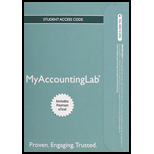
Bonds Payable:
The Bonds payable is the long term liability of the issuer company and contains formal commitment to pay the interest on regular intervals and principal amount to be repaid at the time of maturity which will be fixed at the time of issuance itself.
The Bonds payable is the long term liability issued by the company to finance its expansion or to finance the new project. The bonds may be issued at par or at discount or at premium depending upon the stated rate of interest on the bonds and market rate of interest persistent in the market. Each Bond is having a face value at which it is treated as liability to be paid in future. However, the carrying amount of Bonds payable in the books may differ based on bonds issued at par or at discount or at premium at the time of issue. The Carrying amount of Bonds payable to be shown in the books has been explained as follows in different situation:
Requirement1:
The
Requirement2:
The Journal entry for the issuance of bonds and payment of semi-annual interest.
Requirement3:
The Journal entry for the issuance of bonds and payment of semi-annual interest.
Requirement4:
The price which results in expensive in terms of interest.
Want to see the full answer?
Check out a sample textbook solution
Chapter 14 Solutions
MyLab Accounting with Pearson eText -- Access Card -- for Horngren's Accounting
- TrendCo uses the straight-line method for depreciation. Assets purchased between the 1st and 15th of the month are depreciated for the entire month; assets purchased after the 15th are treated as though they were acquired the following month. On June 18, 20X3, TrendCo purchases a machine for $18,000 that it expects to last for 7 years; TrendCo expects the machine to have a residual value of $4,000. What is the 20X3 depreciation expense for the machine?arrow_forwardI need help with this General accounting question using the proper accounting approach.arrow_forwardI want to correct answer general accounting questionarrow_forward
- Bad Apple, Inc., uses direct labor hours to allocate overhead costs. If Bad Apple estimates $40,000 of overhead and 50,000 hours of direct labor this period, the overhead applied when 4,500 direct labor hours are used should be: a. $3,520 b. $3,600 c. $4,400 d. $5,500arrow_forwardProvide correct answer with accounting questionarrow_forwardCalculate the company's earnings sharesarrow_forward

 AccountingAccountingISBN:9781337272094Author:WARREN, Carl S., Reeve, James M., Duchac, Jonathan E.Publisher:Cengage Learning,
AccountingAccountingISBN:9781337272094Author:WARREN, Carl S., Reeve, James M., Duchac, Jonathan E.Publisher:Cengage Learning, Accounting Information SystemsAccountingISBN:9781337619202Author:Hall, James A.Publisher:Cengage Learning,
Accounting Information SystemsAccountingISBN:9781337619202Author:Hall, James A.Publisher:Cengage Learning, Horngren's Cost Accounting: A Managerial Emphasis...AccountingISBN:9780134475585Author:Srikant M. Datar, Madhav V. RajanPublisher:PEARSON
Horngren's Cost Accounting: A Managerial Emphasis...AccountingISBN:9780134475585Author:Srikant M. Datar, Madhav V. RajanPublisher:PEARSON Intermediate AccountingAccountingISBN:9781259722660Author:J. David Spiceland, Mark W. Nelson, Wayne M ThomasPublisher:McGraw-Hill Education
Intermediate AccountingAccountingISBN:9781259722660Author:J. David Spiceland, Mark W. Nelson, Wayne M ThomasPublisher:McGraw-Hill Education Financial and Managerial AccountingAccountingISBN:9781259726705Author:John J Wild, Ken W. Shaw, Barbara Chiappetta Fundamental Accounting PrinciplesPublisher:McGraw-Hill Education
Financial and Managerial AccountingAccountingISBN:9781259726705Author:John J Wild, Ken W. Shaw, Barbara Chiappetta Fundamental Accounting PrinciplesPublisher:McGraw-Hill Education





